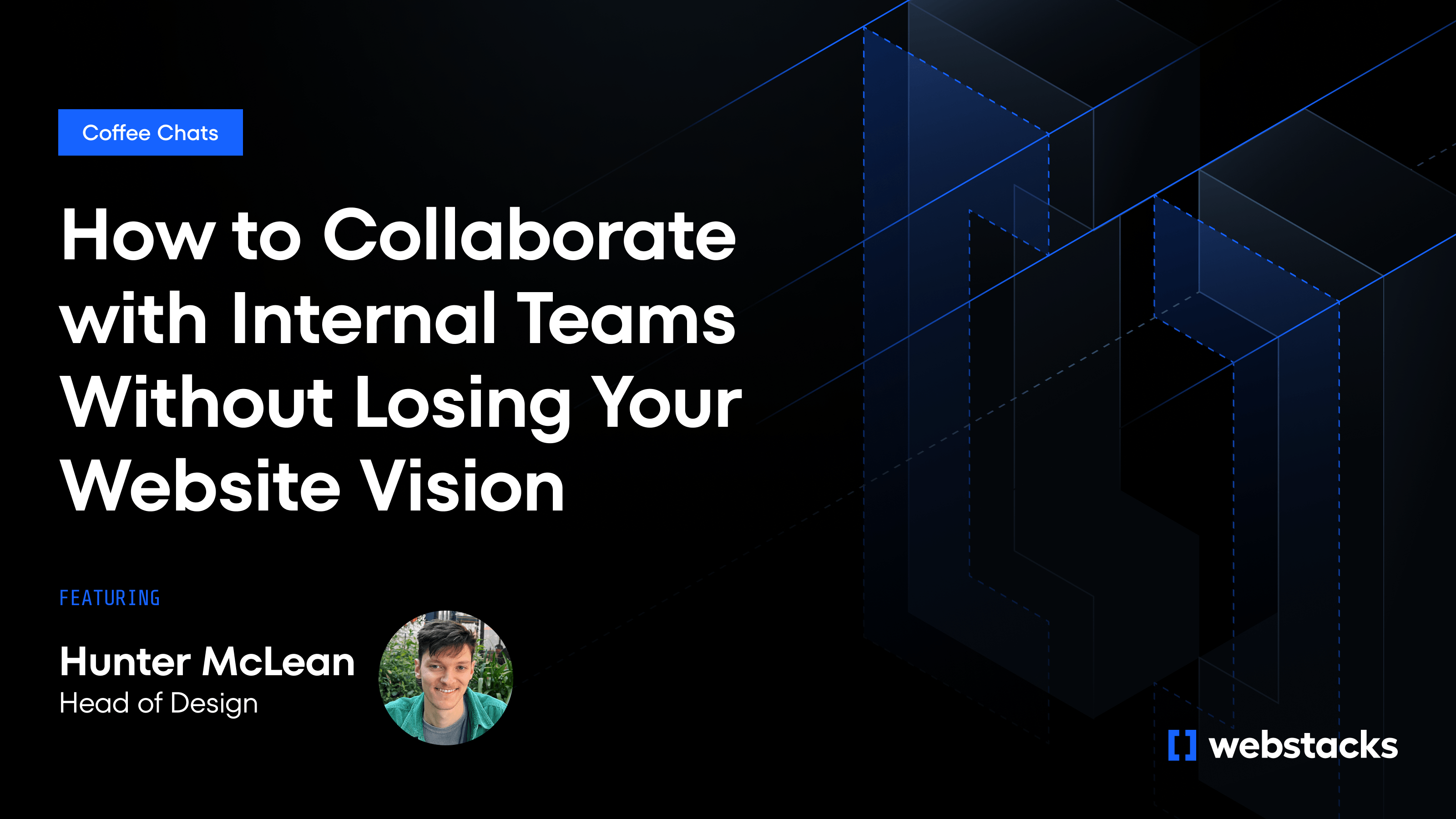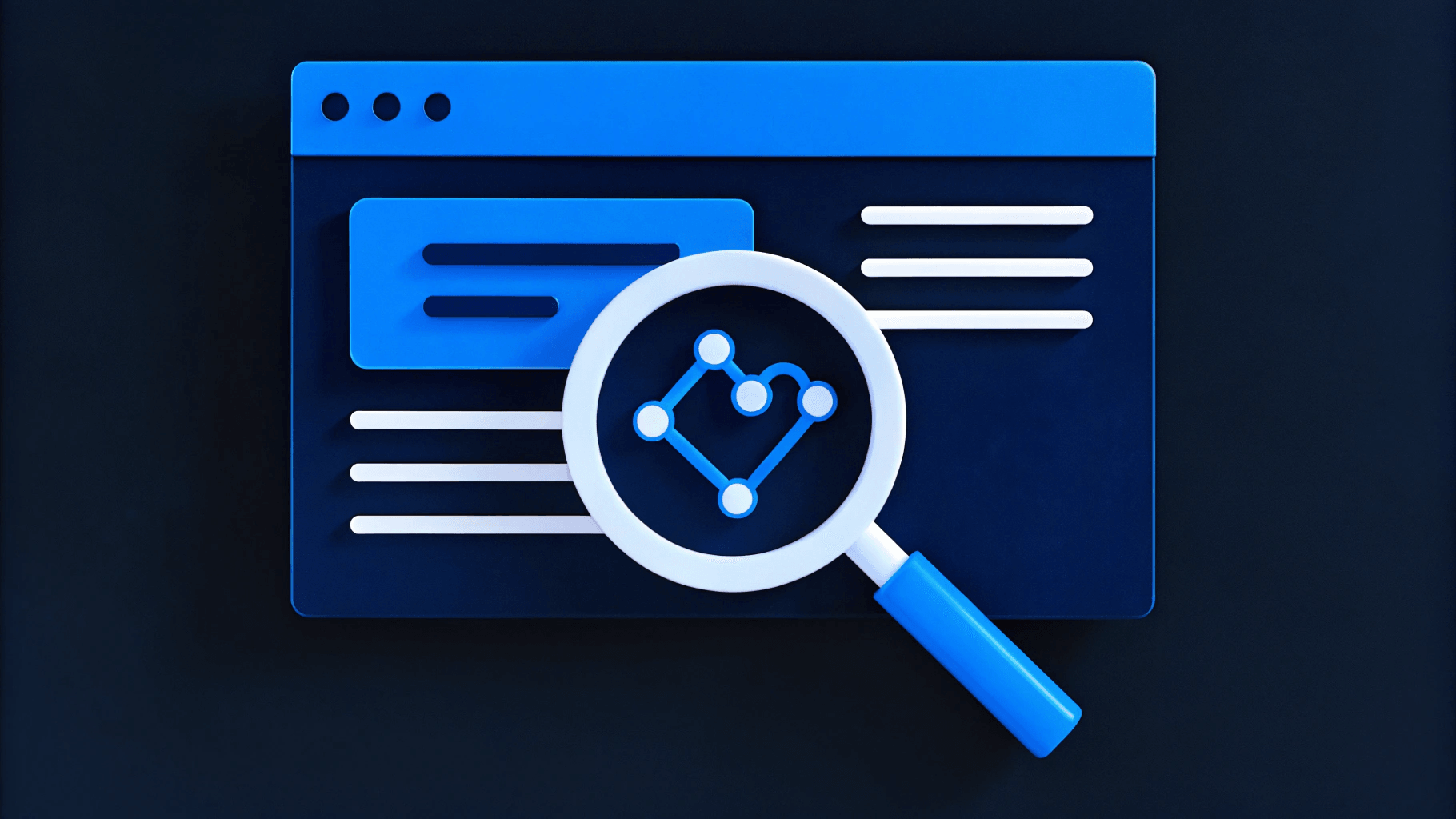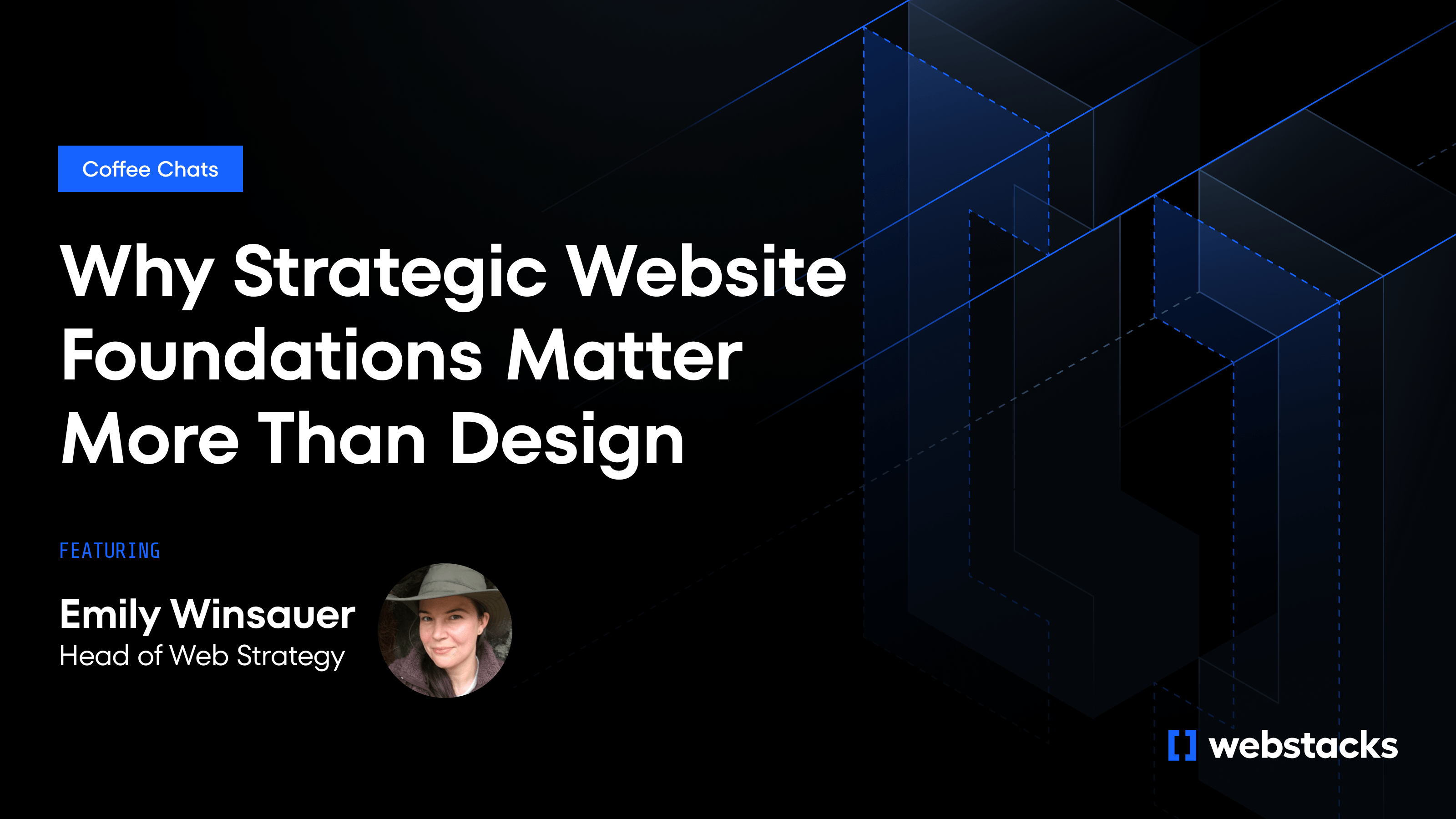Hunter McLean, Creative Director at Webstacks, breaks down how agencies can integrate seamlessly with client teams and how to keep design vision intact from concept to launch
Great web projects don't fail because of bad design or weak development. They fail because teams don't know how to work together.
I recently sat down with Hunter McLean, Creative Director at Webstacks, to talk about something prospects ask us constantly: How do you plug into our existing team without stepping on toes, creating bottlenecks, or diluting the vision? Hunter leads design strategy across enterprise and growth-stage SaaS clients, managing a team that's refined cross-functional collaboration into a repeatable system.
Whether you're a VP of Marketing managing an internal brand designer or a lean startup handling your first major web project, this conversation reveals the operational realities that separate smooth launches from painful ones.
Match Your Designer to Your Team's Working Style
The most critical decision happens before design begins: pairing the right designer personality and working style to your team's culture and pace. Generic agency staffing creates friction. Strategic pairing creates momentum.
"Every team is different," Hunter explained. "That's the beauty of working in an agency and getting to work with so many various companies, different industries. Every team composition is different. Every working style is different. Everyone's starting from a different point."
Before Webstacks assigns a designer to a project, we maps the client's team structure. Who's the decision-maker? Who's hands-on in the CMS? Who owns brand guidelines versus messaging versus performance metrics?
"One of the superpowers of Webstacks is the plug-and-play-ness of our design team," Hunter said. "Not only skill set and where they are the strongest in the realm of design, but also working style, what their energy is, what their collaborative vibe is with clients."
A fast-paced, design-forward SaaS team gets a designer who moves quickly and speaks their language. A client seeking strategic guidance gets a designer who brings structure and proactive recommendations. This matching process sets the foundation for clear communication and seamless collaboration.
Figure Out Who Plays What Role (Before Design Starts)
Role clarity prevents the two most common project killers: input from the wrong stakeholders and missed feedback from the right ones. The Web Presence Workshop surfaces these dynamics before anyone opens Figma.
"Throughout that conversation, you definitely get a feel for who's the decision maker, who's the boots on the ground, who has more preference over animation style and imagery, who has more preference over color usage and typography," Hunter said.
Hunter gave an example: "If you're talking to a product marketing manager who's really focused on messaging the product, they really want to make sure the pages talk about the value prop of the product, the features, all that good stuff. If we're hitting them with, what do you think of this typography? What do you think of this color usage? That might not be their world."
Webstacks maps roles during kickoff and tags the right people in comments at the right moments. Once roles are clear, the team can focus on the next critical step: tying every design decision to stated business goals.
Tie Every Design Decision Back to Stated Goals
Anchoring design rationale in project goals stated during kickoff and workshops speeds approvals and eliminates subjective debates. When clients see their priorities reflected in the work, buy-in becomes automatic.
"We did this because of these goals that we heard from you that we wanted to reflect in the design," Hunter explained. "Consistently bringing out the why that we can bring to the table: we did this because of this UX experience or we did this because of this user journey we want to create. But also this goal that you brought to the table in our kickoff or this note that you mentioned in our workshop."
The conversation isn't "Do you like this?" It's "Here's why we designed it this way based on what you told us matters most." This approach produces faster approvals and fewer revisions because design rationale preempts subjective preferences. But co-creation only works when agencies respect client workflows, not just impose their own.
Respect Your Client's Workflows
Your internal team knows your CMS quirks, approval processes, and content workflows better than any agency will at kickoff. Ignoring that knowledge produces beautifully designed systems that sit unused because they don't mesh with how your team actually works.
"A big piece of just knowing where to flex our expertise and where to rely on the client's expertise," Hunter said. "It's a great tool to have a client-side designer or client-side developer that we can also be like, hey, what would you do in this case? What is your typical workflow to do these things?"
"We don't want to be on the flip side of building the car in such a specific way that the manual is this thick and people are reading through it trying to figure out how to use it," Hunter added. "It should mesh to how they already work, mesh to their workflows."
Webstacks asks questions, listens, and adapts. The goal is a website your team can actually use and scale. This same principle of anticipating problems before they become blockers drives how Webstacks designers and developers collaborate internally.
Loop Developers In During Concept Phase
Bringing developers into the conversation during vignettes prevents late-stage scope creep and technical surprises. Most agencies treat design and development as sequential phases. Webstacks doesn't.
"As soon as I put a designer on a project, maybe two weeks into vignettes when we're still thinking through the design concept, they're like, who's going to be my developer? Because I have questions. I want to make sure this is going to work," Hunter said.
A designer might propose an interaction pattern that looks great in Figma but requires custom scripting that extends the timeline by weeks. Connecting designers and developers at this stage surfaces constraints before they become problems. Developers challenge designers with questions that expose edge cases and technical limitations, creating space for proactive problem-solving. But this only works when designers and developers have structured touchpoints to align assumptions.
Use Component Grooming Sessions to Eliminate Assumptions
Component grooming sessions eliminate the rework cycles and lost Slack threads that plague most web projects. These 90-minute sessions walk through every component in the design system before development begins, addressing edge cases, responsive behavior, and CMS authoring workflows.
"Once we have the design system designed out, before we send components off for client review, we'll get together—designer, developer—and just go component by component," Hunter explained. "The developer will ask questions of what happens when this thing is done or that thing is done. So that when they go to development, all of their assumptions are answered before we even hit that point."
"Our developers do a great job of challenging us by asking questions," Hunter said. "They ask questions that at least from my perspective, when I've been on projects, has not even crossed my mind. I'm like, yeah, that is a potential thing someone could do to this component. What is it going to look like if that happens?"
These sessions prevent developers from building based on wrong assumptions and stop questions from piling up asynchronously in Slack. Grooming pairs with detailed documentation to create a single source of truth for how every element should look and function. With assumptions eliminated, the team can move into a phased build approach that keeps momentum high.
Build in Phases (Not Waterfalls)
Phased handoffs save three to four weeks on timelines by allowing design and development to work in parallel rather than sequentially. Webstacks doesn't wait for the entire design system to be approved before handing anything off to development.
"There's some overlap intentionally," Hunter said. "Development can get started on atoms and molecules as soon as we get client approval on them, which is pretty quick because that's stuff they've already seen in vignettes or it's their current brand colors, typography, all the basics. While they're working on that, we'll usually get into molecules, component design."
This approach also takes advantage of design system flexibility. If a client wants to tweak typography or adjust spacing a few weeks into the build, the change updates everything already built without extending the timeline.
"If a couple weeks down the line, a client is like, actually I want to tweak this element just a little bit or change this typography just a little bit, we can do that," Hunter explained. "That's not the end of the world. It doesn't extend the timeline because we just tweak that one thing. It updates everything we've built so far."
Design and development stay in lockstep with no waiting and no bottlenecks. By the time projects reach page design, another team member steps into a critical role.
Use Your PM Team as a Technical Superpower
By page design, Webstacks' PM team operates as a hybrid technical role, assembling components in the CMS while developers focus on complex scripting and infrastructure. This division of labor accelerates timelines without sacrificing quality.
"A lot of times, our PM team is in the CMS in the backend putting those components in order, building the pages, working on content outlines," Hunter said. "They're so well versed in the CMSs now that they're using our building blocks, putting those pages together."
This frees developers to handle technical integrations, custom functionality, and performance optimization while PMs structure pages and content. This three-way collaboration between design, development, and project management creates the conditions for websites that launch on time and scale post-launch.
Work With Webstacks to Build Websites That Scale
Great web projects happen when the right people collaborate with clear roles and shared goals.
If you're evaluating agencies and wondering how they'll integrate with your team, ask them how they handle these moments. Ask them how they connect designers and developers during concept phases. Ask them how they map your team's workflows before making recommendations. Ask them how they justify design decisions against stated business goals.
At Webstacks, we've refined these processes across dozens of enterprise and growth-stage clients. We know how to integrate with your team, move fast, and deliver websites that your team can actually use and scale. Schedule a Web Presence Workshop to see how Webstacks will integrate with your team.




